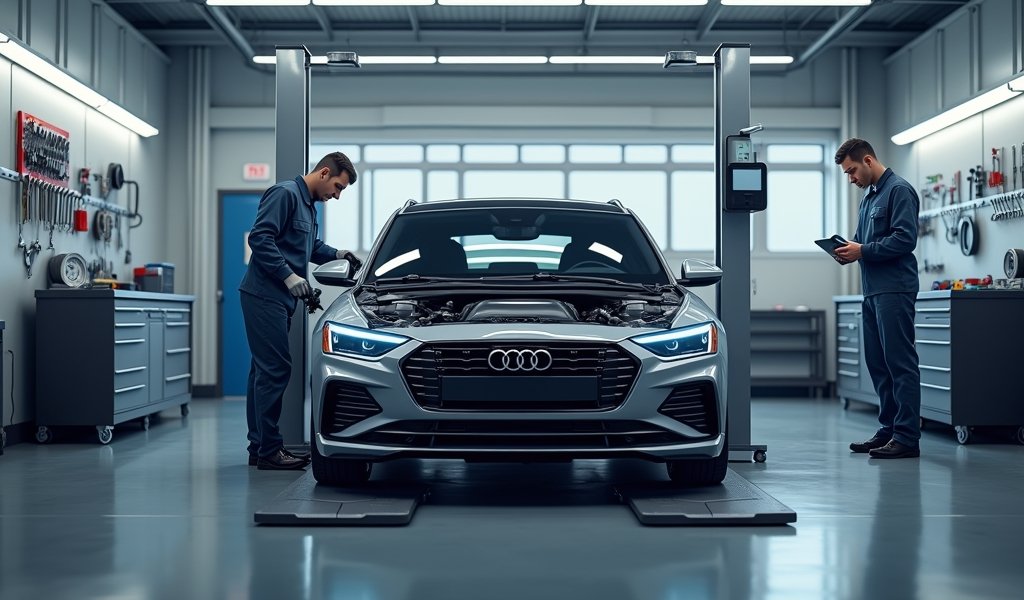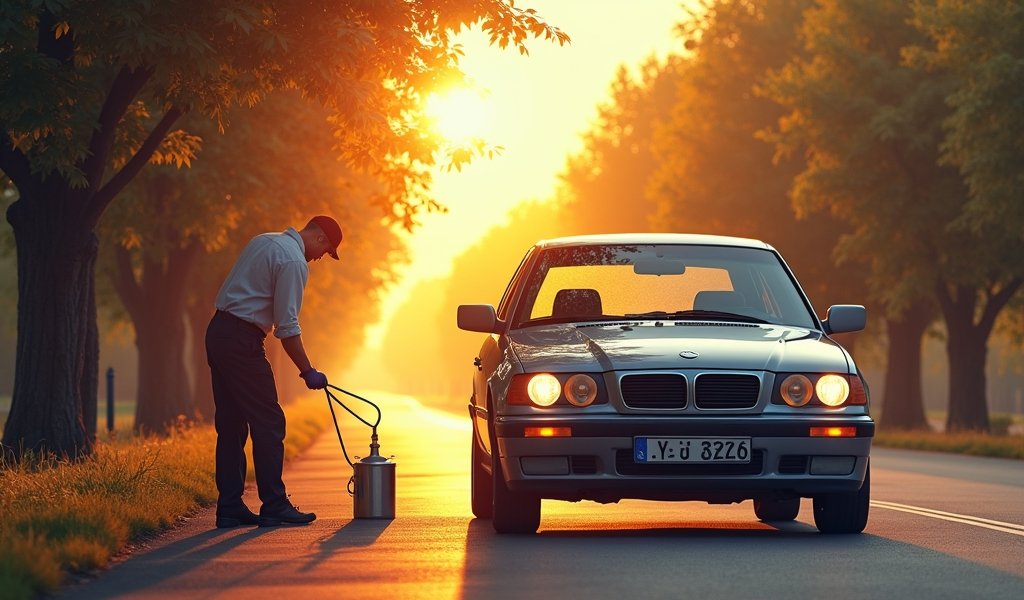Overview
This article provides seven expert strategies to extend a car’s lifespan, including following manufacturer maintenance schedules, practicing gentle driving habits, keeping vehicles clean, addressing small problems immediately, proper storage, monitoring tire health, and using quality parts and fluids. Consistent implementation of these strategies can add years and thousands of miles to a vehicle’s life while saving significant money on premature replacement costs.
Table of Contents
- Why Car Maintenance Matters
- Follow Regular Maintenance Schedules
- Practice Proper Driving Habits
- Keep Your Car Clean Inside and Out
- Address Small Problems Immediately
- Store Your Vehicle Properly
- Monitor and Maintain Tire Health
- Use Quality Parts and Fluids
- Conclusion
- Frequently Asked Questions
Why Car Maintenance Matters
Your vehicle is one of the biggest investments you’ll make in your lifetime. As a master technician who’s spent 25 years under the hood, I’ve seen firsthand how proper care can dramatically extend a car’s lifespan. Vehicles that should have been scrapped years ago continue cruising down highways simply because their owners knew how to extend car lifespan through consistent maintenance.
Think about this: the average new car costs over $48,000 today. Keeping that investment running smoothly for an extra 3-5 years could save you thousands. I’ve helped countless customers push their odometers well beyond 200,000 miles with some simple but effective habits.
In this guide, I’ll share my top seven professional tips to maximize your vehicle’s longevity. These aren’t complicated manufacturer secrets – just straightforward advice from someone who’s rebuilt more engines than I can count. Let’s dive in and add years to your car’s life.
Follow Regular Maintenance Schedules
If there’s one golden rule for vehicle longevity, it’s this: follow your manufacturer’s maintenance schedule religiously. This isn’t just a suggestion – it’s the blueprint for your car’s long-term health.
Your owner’s manual contains a detailed maintenance timeline specifically engineered for your vehicle. Think of it as your car’s personal health plan. Every make and model has different requirements based on its design, materials, and operating conditions.
Oil changes remain the cornerstone of proper maintenance. Modern conventional oils typically need changing every 5,000-7,500 miles, while full synthetics might go 10,000+ miles. However, don’t just go by mileage. If you mainly drive short trips under 10 miles, your oil may need changing more frequently regardless of what the manual states. Short trips don’t allow the engine to fully warm up, which creates condensation and contaminants in your oil.
Beyond oil, your routine vehicle maintenance should include:
- Air filter replacements (15,000-30,000 miles)
- Fuel filter changes (30,000-60,000 miles)
- Spark plug replacement (60,000-100,000 miles for platinum/iridium plugs)
- Timing belt service (60,000-100,000 miles depending on model)
- Transmission fluid service (30,000-60,000 miles or as specified)
I recommend keeping a simple maintenance log in your glove compartment. Note the date, mileage, and service performed. This creates accountability and helps you track patterns over time. Plus, when it’s time to sell, a detailed maintenance history can add hundreds or even thousands to your car’s value.

Practice Proper Driving Habits
Your driving style has a massive impact on your vehicle’s lifespan. I’ve seen identical cars with vastly different longevity based solely on how their owners drove them.
Gentle acceleration and smooth braking make a world of difference. Stomping the gas from every stoplight forces your engine to work harder, increases operating temperatures, and accelerates wear on your transmission components. Similarly, last-minute braking grinds down brake pads and rotors prematurely.
Cold starts deserve special attention. When your engine sits overnight, oil settles in the oil pan. Upon startup, it takes a few seconds for that oil to reach all critical components. Give your engine 30-60 seconds of idle time before driving off, especially in colder weather. Then drive gently for the first few minutes until your temperature gauge shows normal operating temperature.
Highway driving is actually healthier for your vehicle than city driving. The steady state operation allows your engine to reach optimal temperature and stay there, which reduces carbon buildup and helps burn off condensation in your exhaust and crankcase. If you primarily drive short trips, consider taking a 20-minute highway drive once a week to clear things out.
Avoid overloading your vehicle beyond its rated capacity. Those weight limits aren’t arbitrary suggestions – they represent the maximum load your suspension, brakes, and powertrain were designed to handle safely. Routinely exceeding them accelerates wear on critical components.
Finally, minimize extended idling when possible. Modern engines don’t benefit from long warm-up periods, and excessive idling can cause carbon buildup and oil dilution. If you’ll be stationary for more than a minute (except in traffic), turning the engine off is often better for reducing engine wear and pollution.
Keep Your Car Clean Inside and Out
Vehicle cleanliness isn’t just about pride of ownership – it’s crucial for longevity. I’ve seen otherwise well-maintained vehicles fail prematurely simply because they weren’t kept clean.
Regular exterior washing removes corrosive substances that eat away at your paint and undercarriage. Road salt, bird droppings, tree sap, and industrial fallout all accelerate rust formation when left on surfaces. In winter regions, undercarriage washing is especially critical – that salt-laden slush packing your wheel wells and frame rails is silently eating away at your vehicle.
Waxing your car 2-3 times per year provides an additional protective barrier against environmental contaminants. Think of wax as sunscreen for your paint – it blocks UV rays that fade and degrade your clear coat over time.
Interior cleaning prevents premature wear on surfaces you interact with daily. Dirt particles grind into upholstery fibers when you sit down, eventually causing fabrics to break down. Crumbs and spills can work their way into electrical components and switches, causing malfunction. Dashboard cleaning with a UV protectant prevents cracking from sun exposure.
Don’t forget your engine bay. A moderately clean engine compartment helps in two crucial ways: it prevents premature deterioration of rubber hoses and electrical connections, and it makes fluid leaks much easier to spot before they become serious problems.
For those living near coastal areas, salt air presents a constant threat to your vehicle’s metal components. More frequent washing (weekly if possible) and garage storage become even more important in these environments.
Address Small Problems Immediately
In my decades as a mechanic, I’ve replaced countless engines that could have been saved if the owner had addressed a minor issue when it first appeared. Small problems rarely stay small.
That check engine light isn’t a suggestion – it’s an early warning system designed to alert you before catastrophic damage occurs. Modern vehicles have sophisticated sensors monitoring everything from combustion efficiency to catalytic converter function. When something falls outside normal parameters, your car is literally telling you it needs attention.
Unusual noises deserve immediate investigation. That subtle grinding when you brake? It could mean your pads are worn and beginning to damage your rotors – a $150 pad replacement can quickly become a $500+ job if you wait too long. The slight clicking during turns? Possibly a failing CV joint that could leave you stranded if it fails completely.
Fluid leaks never improve on their own. That small puddle under your car might seem insignificant, but it’s a symptom of a failing seal or gasket. Low fluid levels from even minor leaks cause accelerated component wear due to increased operating temperatures and reduced lubrication.
Temperature fluctuations outside normal range indicate cooling system issues that can lead to overheating and warped cylinder heads. A simple thermostat or water pump replacement costs a fraction of major engine work.
Developing a relationship with a trusted mechanic for best car maintenance practices makes addressing these small issues easier. Regular check-ups with someone who knows your vehicle’s history helps catch problems in their earliest, most affordable stages. According to Consumer Reports, regular maintenance can prevent up to 70% of roadside breakdowns.

Store Your Vehicle Properly
How and where you park your car significantly impacts its lifespan. Environmental exposure accelerates aging on nearly every component.
Garage storage provides the best protection from the elements. UV radiation breaks down rubber seals, fades interiors, and degrades paint over time. Temperature extremes stress materials through expansion and contraction cycles. Precipitation finds its way into tiny crevices, promoting corrosion in hidden areas.
If garage parking isn’t available, consider these alternatives. Carports provide partial protection from direct sunlight and precipitation. Quality car covers offer defense against UV rays and light precipitation, though they should be clean when applied to prevent surface scratching.
For longer storage periods (2+ weeks), take additional precautions. Fill the gas tank to prevent moisture accumulation in the empty space. Use a fuel stabilizer for storage exceeding a month. Consider a battery tender to maintain optimal charge without overcharging. Slightly overinflate tires to prevent flat spots, or ideally, move the vehicle slightly every few weeks.
Even your regular parking habits matter. Avoid parking under trees where sap, bird droppings, and falling branches can damage your vehicle. In hot weather, seek shaded areas when possible to reduce interior temperatures that can crack dashboards and degrade upholstery.
If you live in a region with heavy snowfall, try to remove accumulated snow promptly – the freeze/thaw cycles as snow partially melts and refreezes can accelerate corrosion in body seams and panel edges.
Monitor and Maintain Tire Health
Proper tire maintenance extends far beyond preventing flats. Your tires affect fuel economy, handling, braking distance, and even the health of suspension components.
Check tire pressure monthly and before long trips. Proper inflation ensures even tread wear and optimal fuel economy. Even 5-10 PSI below recommended pressure increases rolling resistance, reducing gas mileage by 1-2 MPG in many vehicles. The correct pressure is listed in your owner’s manual or on the driver’s door jamb – not the maximum PSI printed on the tire sidewall.
Rotate your tires every 5,000-7,500 miles to ensure even wear patterns. Front tires typically wear faster than rear tires, especially on front-wheel drive vehicles where they handle both driving forces and steering. Regular rotation extends overall tire life by 20-25% in most cases.
Alignment should be checked annually and whenever you notice uneven tire wear or pulling to one side. Proper alignment ensures all tires share the workload equally and prevents unnecessary strain on suspension components.
Seasonal tire changes make sense in regions with distinct winter conditions. All-season tires are a compromise that performs adequately in moderate conditions but less effectively in extreme temperatures. Dedicated winter tires provide significantly better traction below 45°F, while summer tires offer superior grip and handling in warm weather.
Inspect your tires regularly for damage or abnormal wear. Bulges in the sidewall indicate potential structural failure and require immediate replacement. Uneven wear patterns suggest alignment or suspension issues that should be addressed promptly.
Use Quality Parts and Fluids
I’ve seen the difference quality components make firsthand, and it’s dramatic. Using appropriate parts and fluids for your specific vehicle pays dividends in longevity.
Oil quality matters enormously. Synthetic oils cost more upfront but provide superior protection, especially in extreme temperatures. They maintain their protective properties longer and often allow for extended drain intervals. For older, high-mileage engines, specialized high-mileage formulations contain additives that help condition seals and reduce leakage.
Filters are your engine’s defense system. Cheap oil filters often use lower-quality filter media and bypass valves that may open prematurely under pressure. The few dollars saved isn’t worth the risk to your engine. Similarly, quality air filters trap more contaminants while maintaining proper airflow for optimal fuel mixture.
For maintenance parts like brake pads, quality differences become apparent in both performance and longevity. Premium brake pads might cost twice as much as economy options but often last three times longer while providing better stopping power and producing less brake dust.
When it comes to major repair parts, OEM (Original Equipment Manufacturer) components generally provide the best fit and function. While sometimes more expensive than aftermarket alternatives, they’re designed specifically for your vehicle’s systems. For critical components like timing belts, water pumps, and major electrical parts, the peace of mind is worth the investment.
Fluid specifications matter more than many realize. Modern transmissions, in particular, require specific fluid formulations – using the wrong type can cause shifting problems or even catastrophic failure. Your owner’s manual or a qualified technician can guide you to the correct fluids for your specific vehicle.
According to AAA research, using manufacturer-recommended parts and fluids can extend component life by 30-50% compared to bargain alternatives. This makes quality components one of the best returns on investment for vehicle longevity.
Conclusion
Extending your car’s lifespan isn’t complicated, but it does require consistency and attention to detail. By following these seven proven strategies – maintaining regular service schedules, developing good driving habits, keeping your vehicle clean, addressing minor issues promptly, storing it properly, monitoring tire health, and using quality parts and fluids – you can potentially add years and tens of thousands of miles to your vehicle’s useful life.
The financial benefits are substantial. Every additional year you keep your current vehicle translates to thousands saved on depreciation, financing, and increased insurance premiums that come with newer models. Plus, there’s the satisfaction of knowing you’ve maximized the return on your investment.
I’ve seen countless vehicles hit impressive milestones – 200,000, 300,000, even 400,000 miles – all because their owners made how to extend car lifespan a priority through simple, consistent care. Your vehicle is designed to provide years of reliable service if properly maintained. With these professional tips, you’re now equipped to join the ranks of smart owners who enjoy their vehicles for the long haul.
Remember, your car will take care of you if you take care of it first. Happy motoring!
Frequently Asked Questions
How often should I change my oil to extend my car’s lifespan?
Follow your manufacturer’s recommendations, typically every 5,000-7,500 miles for conventional oil or 7,500-10,000 miles for synthetic. Severe driving conditions like frequent short trips or extreme temperatures may require more frequent changes.
What’s the single most important maintenance task for longevity?
Regular oil changes are the most critical maintenance task for engine longevity. Clean oil provides proper lubrication and cooling while removing contaminants that would otherwise cause accelerated wear.
Can I extend my car’s life by using premium fuel?
Premium fuel only benefits vehicles specifically designed for it as indicated in your owner’s manual. Using higher octane fuel in an engine designed for regular gas provides no longevity benefit and wastes money.
How important is washing my car for extending its lifespan?
Regular washing is extremely important for preventing corrosion and premature aging, especially in regions using road salt or with high humidity. Undercarriage washing is particularly critical for preventing structural rust.
At what mileage should I consider my car too old to maintain?
There’s no specific mileage threshold where maintenance becomes impractical. Instead, evaluate if repair costs are consistently exceeding the equivalent payments for a replacement vehicle over a 6-12 month period.

